
(date unknown)
Franz Ferdinand Carl Andreas Meyer (6 December 1837, Hamburg - 17 March 1901, Bad Wildungen) was a German civil engineer, known primarily as the creator of the Speicherstadt on Hamburg's waterfront.

Franz Ferdinand Carl Andreas Meyer (6 December 1837, Hamburg - 17 March 1901, Bad Wildungen) was a German civil engineer, known primarily as the creator of the Speicherstadt on Hamburg's waterfront.
He was born to Ferdinand Wilhelm Meyer (1800–1862), a merchant who had to abandon his business in 1851, due to financial difficulties. After attending the private boys' school operated by Elise Averdieck, he switched to the Gelehrtenschule des Johanneums. He left there in 1854 to enroll at the Technical University of Hanover. There, he studied with Conrad Wilhelm Hase and became a lifelong adherent of the Hanover school of architecture. After completing his studies, in 1858, he worked for Hase for a year, then joined the Royal Hanoverian State Railways, where he participated in building the Bremen to Bremerhaven line.
He returned to Hamburg in 1862 and found employment with the Port Authority. Three years later, he appointed the Technical Manager, under the Director of hydraulic engineering, Johannes Dalmann . When the position of District Engineer became vacant in 1868, he moved to the city Building Department. That same year, he married Antonie Mathilde Goßler (1848–1920), a niece of Senator Hermann Goßler. Upon the retirement of Christian Wilhelm Plath (1820–1894) in 1872, he was named Chief Engineer, a position he held until his death. [1]
When plans for the Speicherstadt were nearing completion in 1883, he became chief planner and designer for the project. He also became an advisor to the Hamburger Freihafen-Lagerhaus-Gesellschaft, which was charged with operating the warehouses. He hired several architects, including Wilhelm Emil Meerwein, Bernhard Georg Hanssen, Hugo Stammann and Gustav Zinnow, to produce the detailed specifications. [2] In addition to the Speicherstadt, he personally designed a number of bridges. He also engineered the Vierländerin-Brunnen (Four Nations Fountain), and took part in the renovation of Schloss Bergedorf .
Overall, however, his emphasis was on projects for improving public health, which included public baths and water filtration systems. Following the cholera epidemic of 1892, he was able to create drainage and sewage systems that had been proposed by William Lindley in the late 1850s, but rejected by the Hamburg Parliament. He also planned most of Hamburg's inner city parks, and was involved in planning the Ohlsdorf Cemetery. By 1896, he had prepared a general development plan for railways, canals, parks, and other public spaces. [2] He was also sought after as a consultant for projects outside of Hamburg; advising the city of Strasbourg on its proposed expansion in 1878 as well as assisting the city of Kiel with construction related to the opening of the Kiel Canal.

His health worsened in his later years, and he died while under treatment by his doctor at the spa in Bad Wildungen. A bridge and a street in Billbrook are named after him, as is a street in Winterhude. [3]
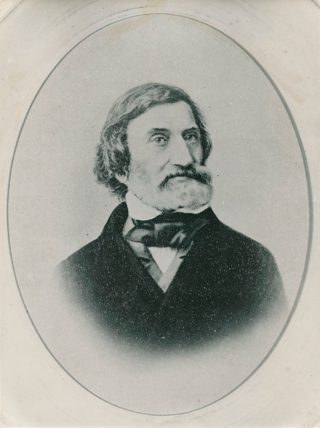
Carl Ludwig Christian Rümker was a German astronomer.

The Speicherstadt in Hamburg, Germany, is the largest warehouse district in the world where the buildings stand on timber-pile foundations, oak logs, in this particular case. It is located in the port of Hamburg – within the HafenCity quarter – and was built from 1883 to 1927.

Joh. Berenberg, Gossler & Co. KG, commonly known as Berenberg Bank and also branded as simply Berenberg, is a multinational full-service private and merchant bank headquartered in Hamburg, Germany. It is considered the world's oldest merchant bank.

Jacob Benjamin Wegner was a Norwegian business magnate. He was one of the country's leading mining magnates as the director-general and co-owner of Blaafarveværket, and also had significant interests in other mining and timber companies.
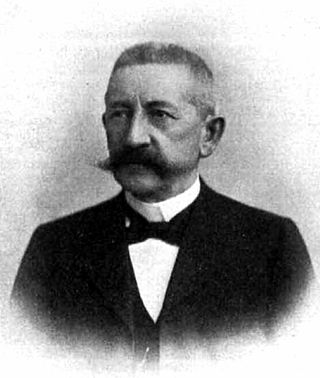
Carl Johann Christian Zimmermann, also known as Hans Zimmermann was a German architect and construction manager.

Ludwig Erdwin Seyler was a Hamburg merchant, merchant banker and politician. He was by marriage a member of the Hanseatic Berenberg dynasty, and was a partner in the Hamburg firm Joh. Berenberg, Gossler & Co. for 48 years (1788–1836), for 46 years as the company's senior partner. The company name was amended in 1791 to reflect him becoming a partner and has remained unchanged since; he "is practically the 'Co.' in the company name." Seyler was one of the first merchants and bankers from modern Germany to establish trade relations with the United States and East Asia. Much of the company's wealth derived from their position as leading sugar importers from the Americas to the North European market, in combination with their activities as merchants bankers. Seyler was one of Hamburg's leading merchants during the Napoleonic Wars and held several political offices. He served as a member of the French-appointed council of Hamburg and after the Napoleonic Wars as the President of the Commercial Deputation, one of the city-state's main political bodies. Ludwig Seyler was a son of the Swiss-born theatre director Abel Seyler and a son-in-law of the bankers Johann Hinrich Gossler and Elisabeth Berenberg through his marriage to their eldest daughter Anna Henriette Gossler.

Johann Hinrich Gossler was a German merchant and banker. He was married to Elisabeth Berenberg (1749–1822) and succeeded his father-in-law Johann Berenberg as head of the Berenberg & Gossler company, that was renamed Joh. Berenberg, Gossler & Co. the year following his death. During Gossler's tenure as the company's main partner it became one of the largest merchant houses of Hamburg. Many of his descendants were prominent in Hamburg society, including his grandson, Hamburg's first mayor Hermann Gossler. Some of his descendants were later ennobled as the barons von Berenberg-Gossler. The Gossler Islands in Antarctica are named in honour of his family.

The Berenberg family was a Flemish-origined Hanseatic family of merchants, bankers and senators in Hamburg, with branches in London, Livorno and other European cities. The family was descended from the brothers Hans and Paul Berenberg from Antwerp, who came as Protestant refugees to the city-republic of Hamburg following the Fall of Antwerp in 1585 and who established what is now Berenberg Bank in Hamburg in 1590. The Berenbergs were originally cloth merchants and became involved in merchant banking in the 17th century. Having existed continuously since 1590, Berenberg Bank is the world's oldest surviving merchant bank.

The Seyler family is a Swiss family, originally a patrician family from Liestal near Basel. Family members served as councillors and Schultheißen of Liestal from the 15th century, later also as members of the Grand Council of Basel. A Hamburg branch descended from the banker and renowned theatre director Abel Seyler became by marriage a part of the Berenberg banking dynasty, co-owners of Berenberg Bank and part of Hamburg's ruling class of Hanseaten.

Georg Heinrich Kaemmerer was a Hamburg banker and politician.
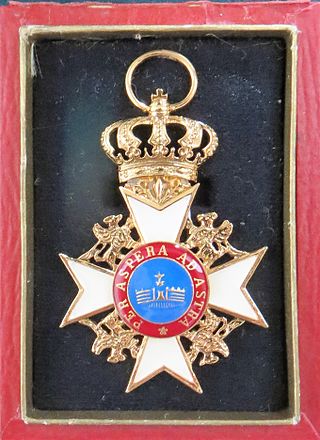
The House Order of the Wendish Crown is a dynastic order that was jointly instituted on 12 May 1864 by Grand Duke Friedrich Franz II of Mecklenburg-Schwerin and Grand Duke Friedrich Wilhelm of Mecklenburg-Strelitz. It is the oldest and most senior order of the House of Mecklenburg.
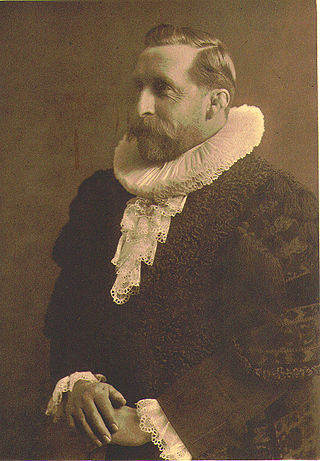
Max Garlieb August Predöhl was a Hamburg lawyer and politician. He served as Senator and First Mayor of Hamburg.

The Hanoverian school of architecture or Hanover School is a school of architecture that was popular in Northern Germany in the second half of the 19th century, characterized by a move away from classicism and neo-Baroque and distinguished by a turn towards the neo-Gothic. Its founder, the architect Conrad Wilhelm Hase, designed almost 80 new church buildings and over 60 civil buildings alone. In addition, Hase taught for 45 years at the Polytechnic University in Hanover and trained around 1000 full-time architects, many of whom adopted his style principles.

Bekenntnis der Professoren an den Universitäten und Hochschulen zu Adolf Hitler und dem nationalsozialistischen Staat officially translated into English as the Vow of allegiance of the Professors of the German Universities and High-Schools to Adolf Hitler and the National Socialistic State was a document presented on 11 November 1933 at the Albert Hall in Leipzig. It had statements in German, English, Italian, and Spanish by selected German academics and included an appendix of signatories. The purge to remove academics and civil servants with Jewish ancestry began with a law being passed on 7 April 1933. This document was signed by those that remained in support of Nazi Germany.

Johann Günther Gensler was a German etcher, illustrator and painter; primarily of portraits. His known work consists of over 120 oil paintings and drawings.

Edwin Oppler was a German architect of Jewish ancestry, and a major representative of the Neo-Gothic style. He designed several synagogues, throughout Germany, all of which were destroyed by rioters on Kristallnacht.
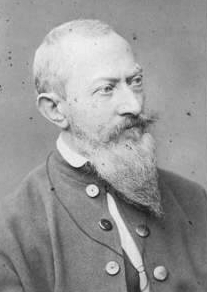
Johann Friedrich Andreas Heimerdinger was a German painter; specializing in still-lifes.

Friedrich Wilhelm Andreas Schwinge was a German landscape and seascape painter; associated with the Düsseldorfer Malerschule.